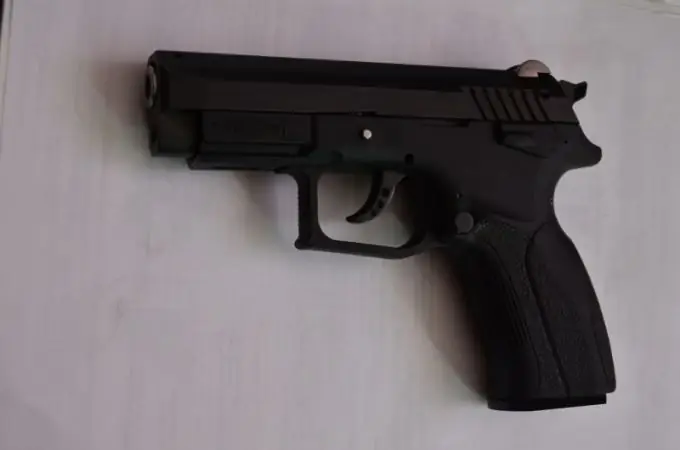- Author Nora Macey [email protected].
- Public 2023-12-16 10:17.
- Last modified 2025-01-23 08:47.
Bluing is the process of obtaining a thin layer of iron oxides on low-alloy or carbon steel. The appearance of blued steel depends on the thickness of this layer, which gives different colors, replacing each other as the film grows. So what colors can blued steel have?

Bluing types
There are three types of steel burnishing: alkaline, acidic and thermal. Alkaline burnishing is the aging of steel in an alkaline solution with an oxidizing agent at temperatures from 135 to 150 degrees. The acid burnishing process takes place in an acidic solution by an electrochemical or chemical method. In thermal bluing, steel is oxidized at high temperatures and superheated water vapor. Also, thermal bluing can be performed in molten salts, vapors of ammonia-alcohol mixtures, or in an air atmosphere.
When bluing in an air atmosphere, the surface of the steel is pre-coated with an oil or asphalt varnish.
As a result of bluing, the steel acquires luster, microporous fine-crystalline surface structure, as well as improved protective properties, which increase after impregnation of the oxide film with vegetable or mineral oils. Today steel burnishing is mainly used for decorative finishing and metal corrosion prevention. In addition to the external coloring of the object, bluing protects the steel from oxidation under the influence of moisture and air.
Blued steel appearance
With the help of bluing, steel objects can be given a wide variety of colors using one heating - the color will depend on the degree of heating of the steel. When an object is heated to 220 degrees, blued steel will have a light orange color, heating to 225 degrees will give an orange color, 235 degrees will give a yellow color, 277 degrees - purple, 280 degrees - blue, 299 degrees - blue, 316 degrees - black and blue coloring.
Before bluing steel, the processed steel objects must be thoroughly pre-cleaned.
To give blued steel its most popular greenish-brown color, grind 3 cups of olive oil with 1 cup of antimony trichloride while heating. The resulting mixture is applied in a thin layer with a rag to the surface of a metal object and left to soak for twenty-four hours. After this time, the steel will acquire a rusty hue, so the bluing procedure is repeated once more, after which the object turns brown, and then as many times as necessary to obtain the desired color. The process usually takes ten to twelve days. The finished blued steel must be thoroughly washed, dried and polished with a special stone (or varnished / varnished).






